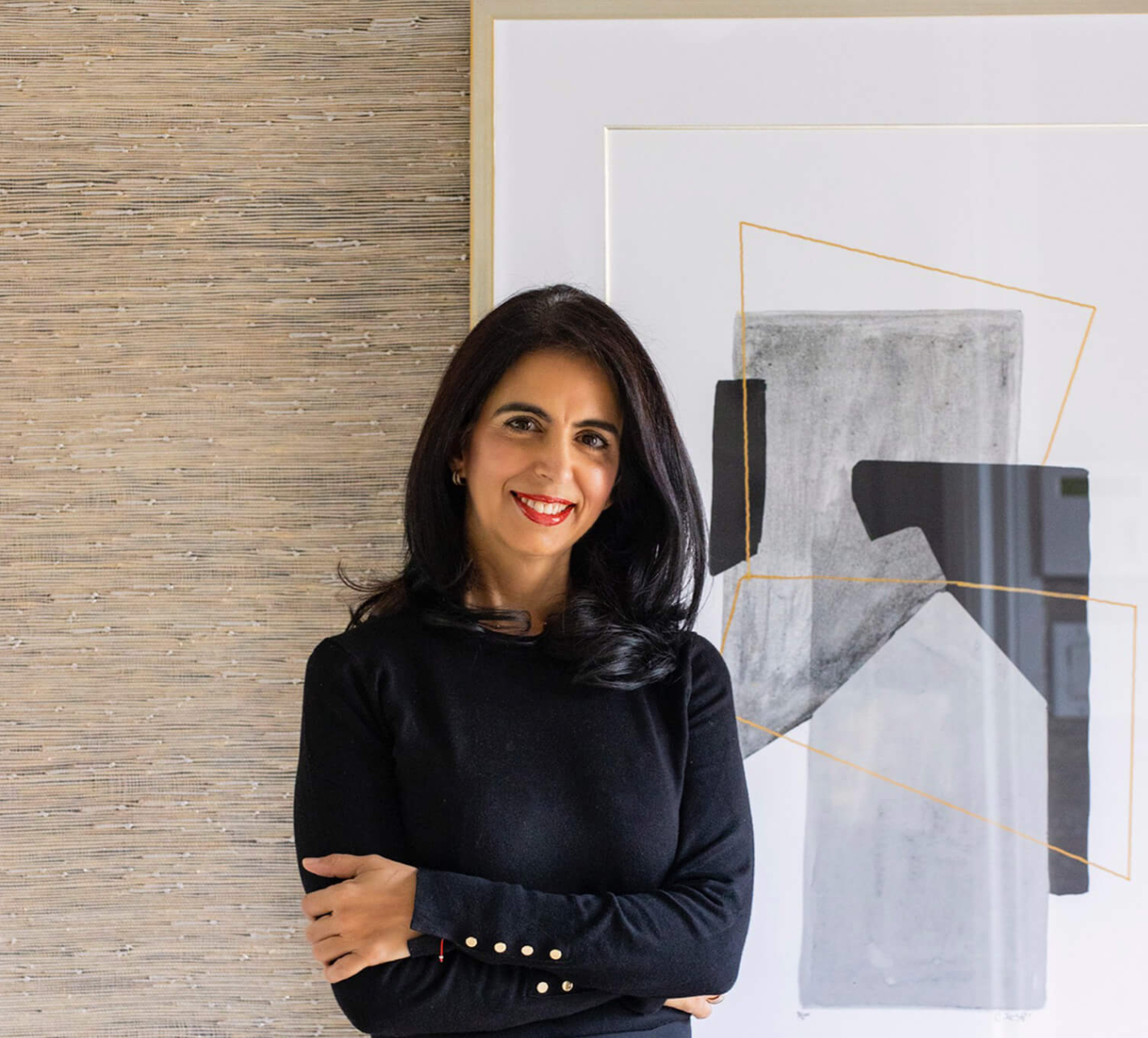The 50 States Project is a yearlong series of candid conversations with interior designers across the country about how they’ve built their businesses. This week, Key Biscayne, Florida–based designer Maite Granda tells us about how growing up in Cuba and Spain influenced her aesthetic, how a hospitality background taught her how to deliver a VIP client experience, and the biggest project mistake she’s never repeated.
What was that moment you realized that you wanted to pursue a career in design?
I grew up in a small coastal area in Cuba, in a family of women who loved beautiful interiors. I lived there until I was 12 years old. Every other week, I would go to Havana with my father to get my allergy shots. He’d say, “After you get your shot, I will take you wherever you’d like to go.” There was a guy who made ceramic pieces at his home, and every time we went to Havana, I would ask to go to his house and see what he had done recently. I’d pick something out to bring to my mom—something for the house. We had a hacienda, like a farmhouse. After my grandparents left the country, that area of the house was empty, so I would go there to play house—I’d bring the flowers from the backyard inside. Design, I think it’s [in my] nature. It’s something that I have always enjoyed.
Right before we moved back to Spain, where my parents are from, I remember visiting the Nacional Hotel—one of the most beautiful hotels in Havana. I remember being seated in the corner, looking at the beauty of the hotel and thinking, “It doesn’t come from nature—someone had to put this together.” I can picture my dress—everything from that moment. And I told myself at that moment, “I wish I was able to do something like this.”
I lived in Spain [from when I was 12] until I was 18—that’s when we came to the United States, because my aunts and one of my grandmothers were living here. I did my last year of high school here, and then began looking at colleges.
Were you looking at design schools?
I found a good architecture school in Cincinnati, but my father said, “Cincinnati? Are you crazy? You’re staying here.” I had to start working, because we were immigrants—I needed to work and go to school at night. I began working at a hotel and worked my way up, and at the same time, I was getting my certificate in travel and tourism at night.
I married a TV anchor, and my husband got transferred to New York to work at ABC. When we got there, I immediately contacted a high-end tour operator from Spain that was opening their doors on Fifth Avenue. They interviewed me, saw that I had a lot of experience and knew Spain very well, and I was hired. It was a beautiful role, because I was welcoming all these VIPs from Spain to the U.S.—most of them were very VIP clients. I used to fly with them, and it gave me the opportunity to get familiar with beautiful places in New York and Washington.
I had a job in my early 20s that offered a real glimpse into that VIP world, too, and it completely reshaped my understanding of how high-end clients live and travel.
Absolutely. I needed to make sure that all the bedrooms at the hotels were perfect before the clients arrived—I researched each client to see what kind of flowers they liked, or if they liked chocolates, so that I could welcome them in a very exquisite way. I was making sure the press did not know they were in town. It gave me a very good eye for treating VIPs with very high-end service.
In this profession, we're always dealing with very powerful clients, but you cannot feel intimidated. You have to be at a level where you both speak the same language, and that brings a lot of confidence to the client. I learned that at such an early age; I was about 25 when I started with that company. And it was not only knowledge—I felt very powerful, because they were coming from Spain and most of them did not speak any English at all, so I was the one translating. I felt secure, and then little by little, I was getting into a comfortable position around these people.

How did you end up in Florida?
After I got divorced, I came to Miami with my 3-year-old and opened my own tour operator—an agency for travel to South America, specializing mostly in places like Machu Picchu in Peru. I did that for seven years, and it was a very, very successful business. But when the economy went down in 2007, I closed the company. I realized that it wasn’t giving me any profit—I was working to support the company. I was in the process of getting a loan on my house to keep all the people in my office, when I said to myself, “This is not a business anymore.” I had remarried, and my husband was a real estate attorney. The real estate [market] had also crashed, so it was a very hard time.
You were both in fields that really took a hit—and for a long time.
Absolutely. And not only that—we had recently purchased a big house because both of our businesses were going so well. Around that time, I read Eat, Pray, Love by Elizabeth Gilbert, and I identified so much with everything—my life in New York, and how it looked so perfect but I wasn’t happy. [I saw] myself in that book, and it gave me that energy and inspiration to do something else. I called the University of Art & Design here in Miami and made an appointment. I didn’t tell anyone but my mom—I said, “I want you to come with me on such-and-such day. I have an appointment at a university.”
An appointment for you?
My daughter Natalie was a senior in high school at the time, so we are sitting [at the university], and my mom says, “Is this where Natalie is coming?” And that’s when I told her, “No, this is where I’m planning to come.” It was so funny, because I remember I was surrounded by 18-year-olds with their parents—and here I was, almost 40, with my mom. But I was feeling so over the moon, I couldn’t care less.
And you loved it?
We did a walkthrough at the university, and I felt like I didn’t want to leave—I had never been in a place that made me feel so inspired. They did all the financing documents, but it did not [seem likely that I would qualify] because I had a house and this and that. But I told them, “I closed my business, my husband barely has any business right now, and we have two kids—I [need a loan to attend].”
A week later, a lady called me and said, “I have no clue how it happened, but I got your file on my desk, and you are approved for a loan for the four years—if you want to begin, the quarter just began, so let us know.” I went immediately, that same day, and got everything I needed to start the journey.
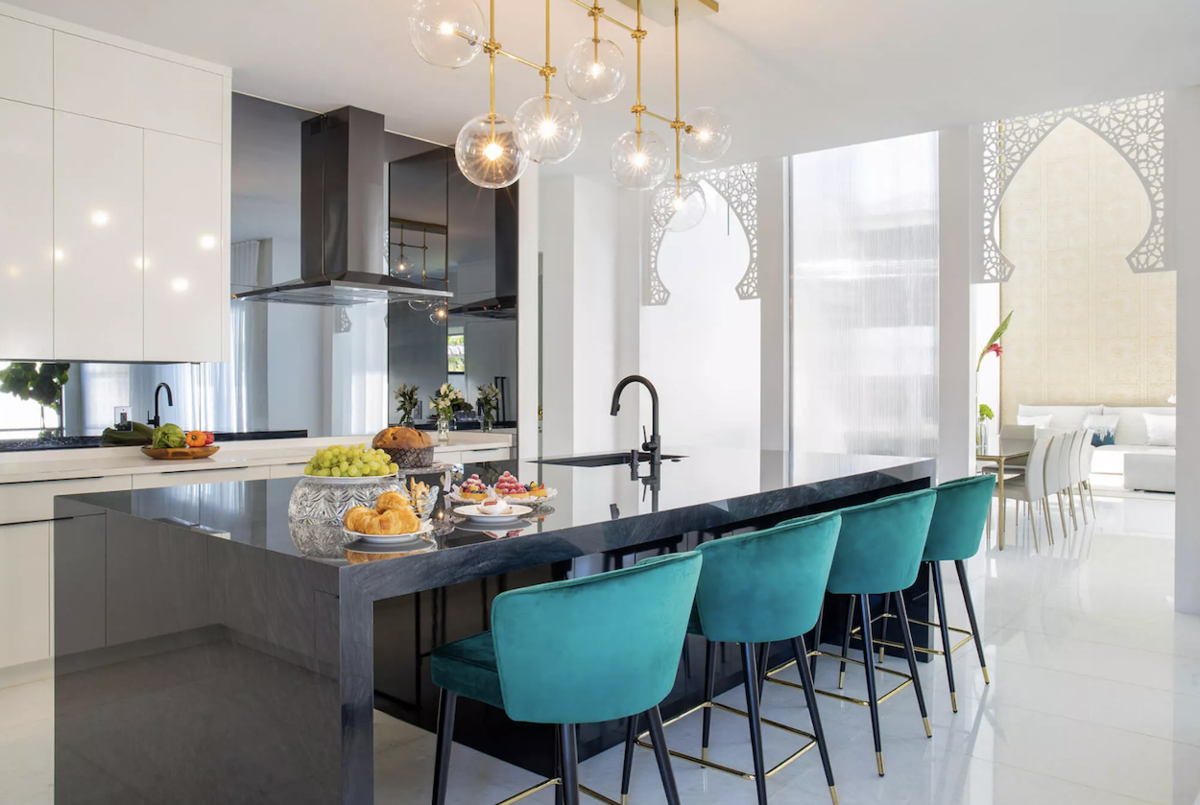
You went back to school full-time—for four years?
I did. It was overwhelming, because my daughter was going out of state for college, my son was only 4 years old, and my mother was diagnosed with MS. Everything happened at once. But I was so happy. My husband would say, “The years will pass no matter what, whether you do this or not. Right now, we are in the middle of a recession—it’s better that you go to school now, because you will be prepared [when it ends].”
How did you like going to university?
It was the best four years of my life. I even enjoyed staying up every single night putting boards together—everything. It was a huge challenge, though, because at 40 years old, mentally, it’s harder to learn all of the programs—AutoCAD, 3ds Max.
It has to be such a different experience.
I look back and think, I don’t know how a student goes through this at such a young age. Sometimes the teachers are not so kind. Once, I was returning from Alabama after helping my daughter [get] established there; I came back to Miami, and the next day, I received the news that my grandmother had passed away in Tampa. I went to Tampa immediately for the funeral, and on Monday morning, I was supposed to be at the school at noon to present 14 floor plans—electrical planning, everything—for one of the classes. I had everything ready, but because I got to class 10 minutes late, the teacher gave me an F for the semester. You learn from another perspective, because you can say, “Sometimes it’s not fair, but it is what it is—and you have to learn how to deal with that.”
What did you plan to do after graduation?
While I was going to college, I started thinking that I should open a company. Everything takes time, so [I thought] the longer the company was open, the more credibility I would have. I opened the company while I was enrolled in school, I created my own website, and I would upload all of the projects I was doing for school. I started a blog and I would write about what I was doing. So when I graduated, I already had two projects.
So you were able to hit the ground running.
As soon as I graduated, I remember this lady from New York contacting me through my website. She said, “I’m a retired teacher, I’m moving to Miami, and I’ve been dreaming about having a magazine home. All I have is $100,000. I just bought a house in this location. Do you think we can do it?” And to me at the time, $100,000 was a lot, so I said, “Of course we can do it.”
How did the project go?
I jumped right in. I didn’t know the timelines. I interviewed a very high-end GC—I knew he was high-end because he was working with a very high-end designer that I did an internship for—and I said, “We have this project.” But as soon we got the project, he started delaying everything. But I had promised the lady that she was going to be able to move into her property by December 24, which was in two months.
Oh, no!
I was dedicated to that project 24/7. I made it happen. I was doing numbers every single day—I worked [within] my budget from the beginning. We turned in the project on the 20th of December, and she was over the moon. We were crying. My mom was there, too, and it was such a beautiful moment. We are still connected, the client and me.
Do you have any regrets about those early days?
The only mistake [I made] was hiring someone from my school to take the pictures. It was a disaster. I learned in that moment that when you put so much work into something, the only way that you have to show your art as a designer is when you work hand in hand with a good photographer. From that moment on, I have hired professional photographers to do all my projects.
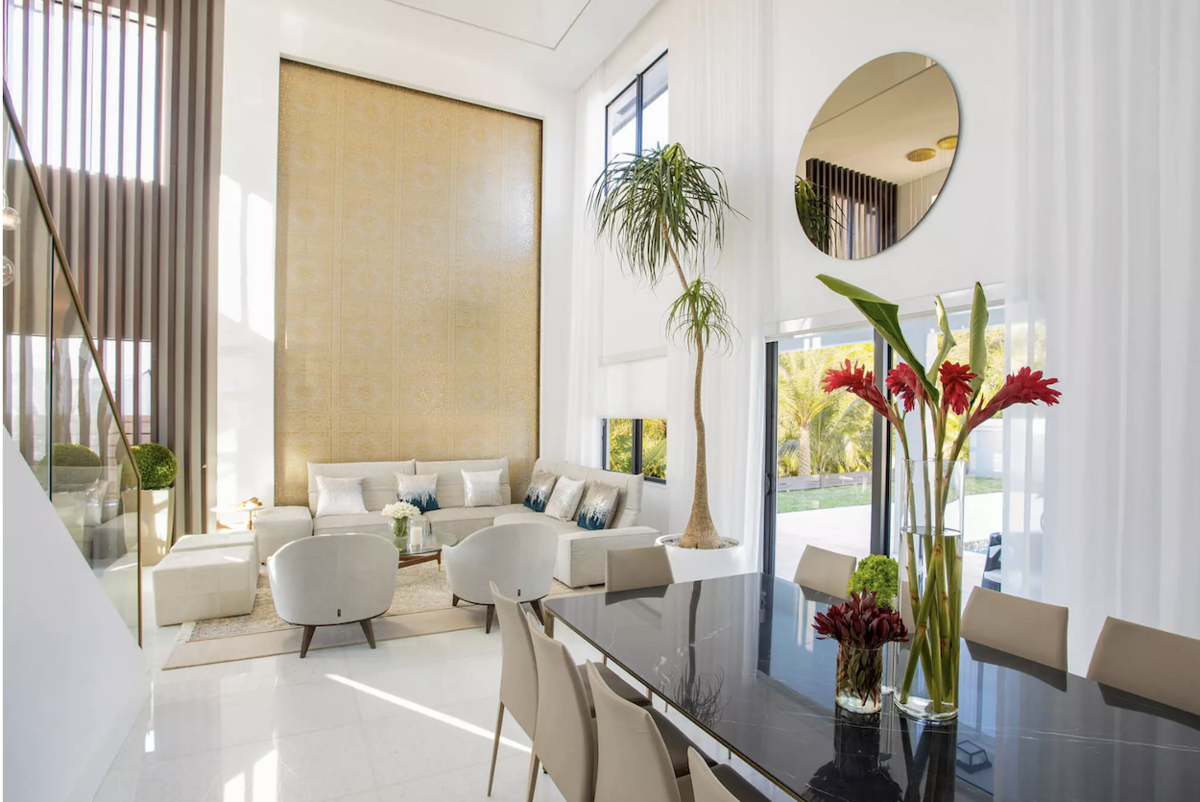
How did the business grow?
My business partner in the travel company recommended me to one of her relatives from Peru, who is one of the most wealthy Peruvians. He had purchased a big house here in Sunny Isles [Beach], and I was blessed to do that big house—that was my second project. When it was photographed and uploaded to my website, it brought me a lot of clients. From the very beginning, I told myself that I will only do entire projects. I will not begin by doing one kitchen or one bedroom. I thought, If I want to put my name out there, let’s do it right from the beginning.
The experience that I had in my business before [launching the design firm] helped me know that I had to sell myself high from the very beginning. Otherwise, if you start doing things here and there, you will be all over the place and not be able to give the attention and professionalism that every project deserves.
How do clients find you?
I’ve been with Houzz from the very first day. For me, Houzz has worked beautifully—but I think it all depends on how you work with Houzz: if you are in contact with a representative, you’re telling them what market you want to be in, what position you want to be in, and the types of projects you want to attract—and, most important, if you reply to clients immediately.
That impacts the kinds of leads you get? And how fast is “immediately” for you?
I always have my number connected to Houzz. When I get an inquiry from Houzz, I call within five minutes, because I know that lead goes to other designers, as well.
You’ve had your business open for more than a decade now. What does your team look like today?
We have a very structured team. I have four designers that do drawings and elevations and help me to prepare the presentations. We have three others that are just drawing—two of them are architects from other countries—and as soon as the proposal is approved, they take measurements and verify the floor plans and do 3ds Max, as well. We have one lady who does all of the purchasing, and then two project coordinators to do the follow-up, and a bookkeeper.
And then we have Ana, who was my business partner in the tour operator company. She’s been one of my best friends for over 20 years now, and she’s the face of my company—she’s the one that answers the phone and explains the entire process to clients. She knows the company from A to Z. When I opened the company, I said, “You have to come with me.” She said, “I want to be by your side, but not as a business partner—I don’t want that responsibility.” She wanted something lighter, so she’s basically the customer service.
We also have the architect that we work with—he’s not inside our office, but we work with him, and we have two GCs that are basically 99 percent working with us fully.
Wow, that’s amazing. But it sounds like you’re the only one doing design work?
I’m the only designer—which is good and not good.
How so?
Maybe other designers have a better way to do it, but in my own practice, I had hired very good designers, led them through the way that I do my work, and then trusted them and gave them complete [autonomy] to work on a project. But at the end of the presentation, the client says, “It’s beautiful—but it is not you.” And I look at it and I say, “It’s true.”
The other designers do beautiful things. But I’m very colorful—and I’m colorful in a very careful way. I grew up in two countries—the Caribbean is very colorful, and then Spain, which is color, it’s flamenco, it’s beautiful, it’s passion—and I think I translate that into my projects.
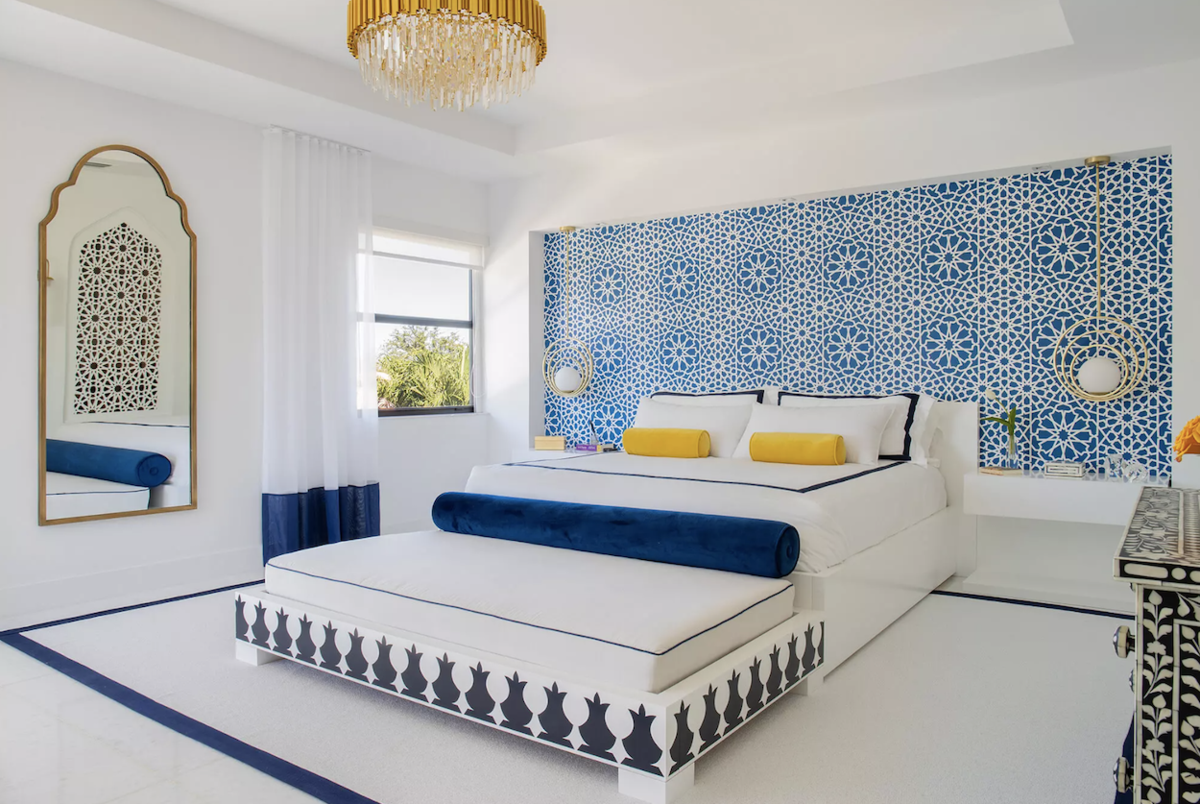
How many projects are you typically working on at one time?
Right now, we have 22 active. Before COVID, we would have 10 or 11 projects max, but now we have doubled and it is totally insane. Right before this call with you, we were having an office meeting [and talking about the fact] that we need more people. I need to start hiring more people, because we are saying no to too many projects—and we are getting these projects that are over the moon.
Do you want to be able to take on some of the things that you’re turning down right now?
Yes and no. It’s complicated, because I feel that I have a very strong responsibility with everyone working in my office. I’m always afraid that at some point, [the industry is going to] decline—and those people depend on me. I think that every business owner has the same feeling: You have a responsibility for the people working for you, and you question yourself.
None of this [was an issue] before COVID. Now, everyone is thinking about making their house more comfortable, but what will happen when COVID is not here anymore? I think everyone will say, “We’ve had enough being at home. Let’s go back to travel.” So I think that it’s important for us to do the most that we can now that the business is doing so well.
Where do your clients work with you directly, and where are they in contact with your team?
As soon as we have a project signed, we create a WhatsApp account for that project. I assign the designer and the drawing person that is working on that project, and then the project coordinator, the bookkeeper and [I] are on that account. And the client, of course! That way, we keep communication open all the time.
Why WhatsApp?
I’m located on a small island in Miami, and most of the clients are international. I have a lot of clients purchase a beautiful home or apartment on the island and they say, “I want this to be redone, but I have to go back to my country. I’ll come back six months from now.” I created the WhatsApp group as a way to be able to [stay in touch]. Most people who live in the U.S. don’t use WhatsApp, but it’s totally different in my case because most of my clients are all over the world. They are in Italy and Spain. I have a client who purchased a beautiful Spanish-style mansion here who is American, but he lives in China. So for me, it’s free-of-charge communication with my international clients—and all of them use WhatsApp.
That means you weren’t presenting to your client in person—even before COVID.
Exactly. When COVID happened, we were three years ahead of the game—[going virtual] did not impact me whatsoever. We do all of the presentations in Google Slides, so it is very easy for us to share with the client immediately.
Do you present everything to the client for approval at once?
We send a questionnaire when the clients sign on, and it has a lot of questions that will give me hints when I start designing. In that questionnaire, I have a lot of links to my past projects, and we ask the client to show us the project that they identify with most. So once the questionnaire comes in, the project coordinator sends an email to the client letting them know that within 15 working days, we will have a pre-presentation via Zoom.
Oh, interesting. What’s a pre-presentation?
We put a presentation together with my inspiration and some selections I have made for each of the rooms to see if we are heading in the right direction.
So it’s not a final selection—just your first ideas?
When we were doing just the final presentation, there were too many changes coming back. So I decided to switch it around and say, “Instead of going into the final presentation blind, let’s do a pre-presentation where we can discuss everything.” The client can tell me, “Yes, I love the way you’re going,” or, “This room, I’m not too sure.” And about two weeks after that presentation, we go into the final presentation.
That’s a fast timeline!
We have a schedule for every single project, and I’m very, very structured. I always let them know that if there’s anything from the final presentation that we are changing, it has to be within a week of presentation. If the client has not made a decision within three days, we call back to make sure they know that we are waiting to hear from them about if there’s any change to the presentation. I recently had a couple that waited about a month to make a few changes, and that means [I have to] get someone who is working on a new presentation out of that presentation and go back into the other one—it’s complicated.
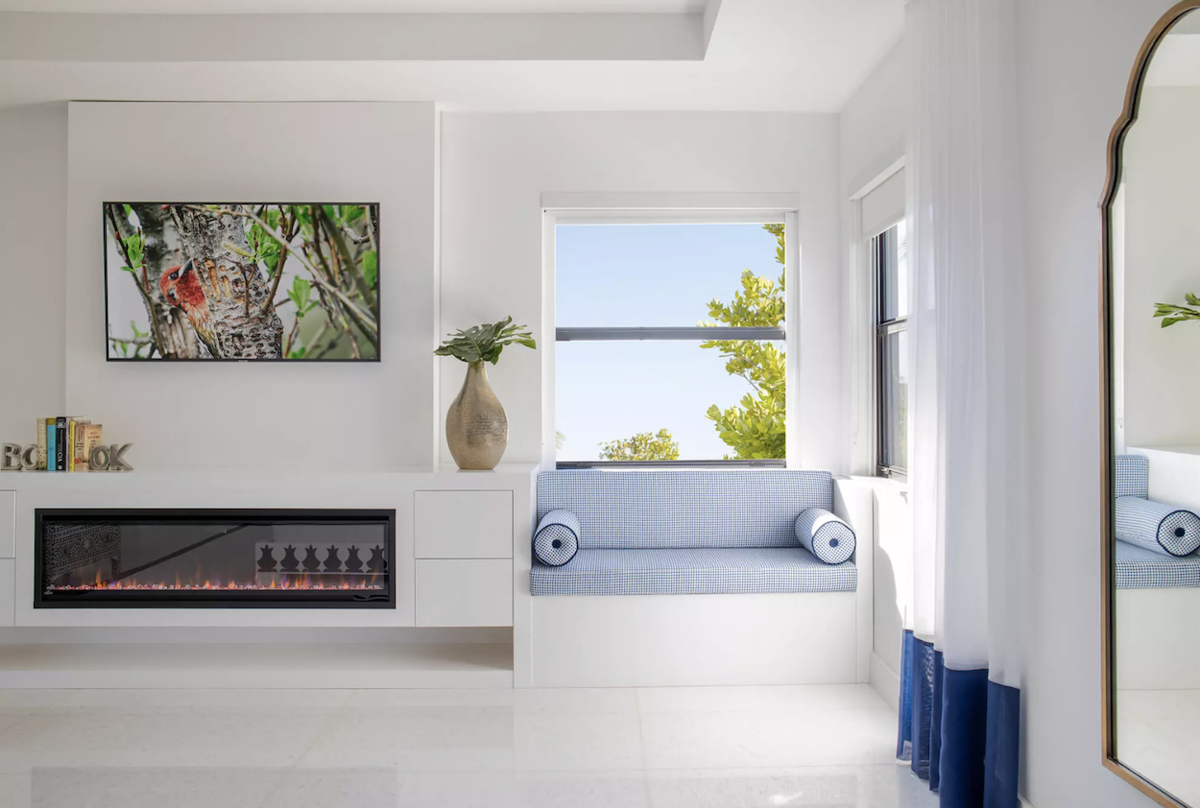
Once they approve everything, what happens next?
After that, we let the client know that there’s going to be a silent month—otherwise, they get desperate.
They’ve written a big check, and then they don’t hear anything.
Exactly. We always give updates every Friday, but sometimes waiting for Friday is too long for them. I tell them, “Listen, this ‘silent month’ is the month that we’re working the most,” because we’re sending all of the vendors to the property to get final estimates on everything. We are getting the drawing team to the final drawings—for the millworkers, for the GC, for everyone. I [explain that] the drawings they saw are for the presentation, but once you have to submit drawings to the GC and architect for permits, it’s a totally different set of documents. The first month of execution is just us working behind the scenes on things that they don’t see.
At the end of that first execution month, we send the client the entire cost of the project, room by room. At that point, they are able to accept or decline anything for any room that they do or do not want. Let’s say there’s a flower arrangement, just as an example—they are going to accept or decline that, and if they decline, the project coordinator gets in contact with the client and says, “I see that you declined a few pieces. Does that mean that you don’t want them, or do you want us to replace that with something else?”
Once all of the items are approved, the sourcing department starts purchasing, we put in the deposits for the millwork, and everything starts rolling.
The client sees what everything costs when they’re looking at all those items, but where else in the process have you talked about the budget?
I always ask clients to give me a budget. I tell them, “Listen, I don’t know what your bank account looks like.” I’m very open with my clients, no matter how rich they may be. I say, “Do you like Ikea, or do you like Artefacto?” Because I’ve worked with clients that will buy a $29 million home, but they are not expecting to go over a certain budget with me. They say, “This is a second home, and I travel frequently. I want a nice sofa that is comfortable, but I’m not into $20,000 for a dining table.” Sometimes they have the money because they take good care of the money.
How do you navigate that?
I say, “OK, I need a budget that you feel comfortable with. If you were to do this yourself, how much would you be willing to spend? And then I will allocate the funds.” I love big, nice sofas, so I put in an amount for that. If there’s a kitchen remodel, that will take approximately this amount, and installation will take this—I allocate the biggest expenses first, see what I have left for the rest, and do a mix of high and low.
What does that high-low mix look like?
As an example, I’ll use Ikea more [than you’d think], but most people will never know that it is Ikea because I’ll [source] custom-made bamboo doors for the cabinets or have my millworker make a custom top for the table. Depending on the client and their budget, if I do my presentation and see that I’m getting close to the final amount but there’s something [expensive] that I really like, I give them a call and say, “I think this piece would look amazing, but it will take me out of the budget by such-and-such amount. Is that OK or should I stick to something else?”
I shop at the high-end showrooms in Miami—Artefacto and Arravanti, and I use Anima Domus for Italian pieces. But I’m very budget-minded—I don’t tend to offer very expensive pieces, so I work a lot with my high-end vendors, asking them what they have to send to the warehouse. I have four storage units myself, so each time those vendors tell me, “We’re going to have a big sale—maybe 80 percent off,” the pieces I see myself using, I purchase them and bring that to my storage. Or places that I purchase so much from, I buy at the end of the year when they have their big sale, and they keep it in storage for me until I have a project to put it in. I’ll also shop from CB2, Williams-Sonoma, Anthropologie, Wayfair, HomeGoods—all over. I get all of the big pieces at the showrooms here, but then I’ll do a lot of shopping online.
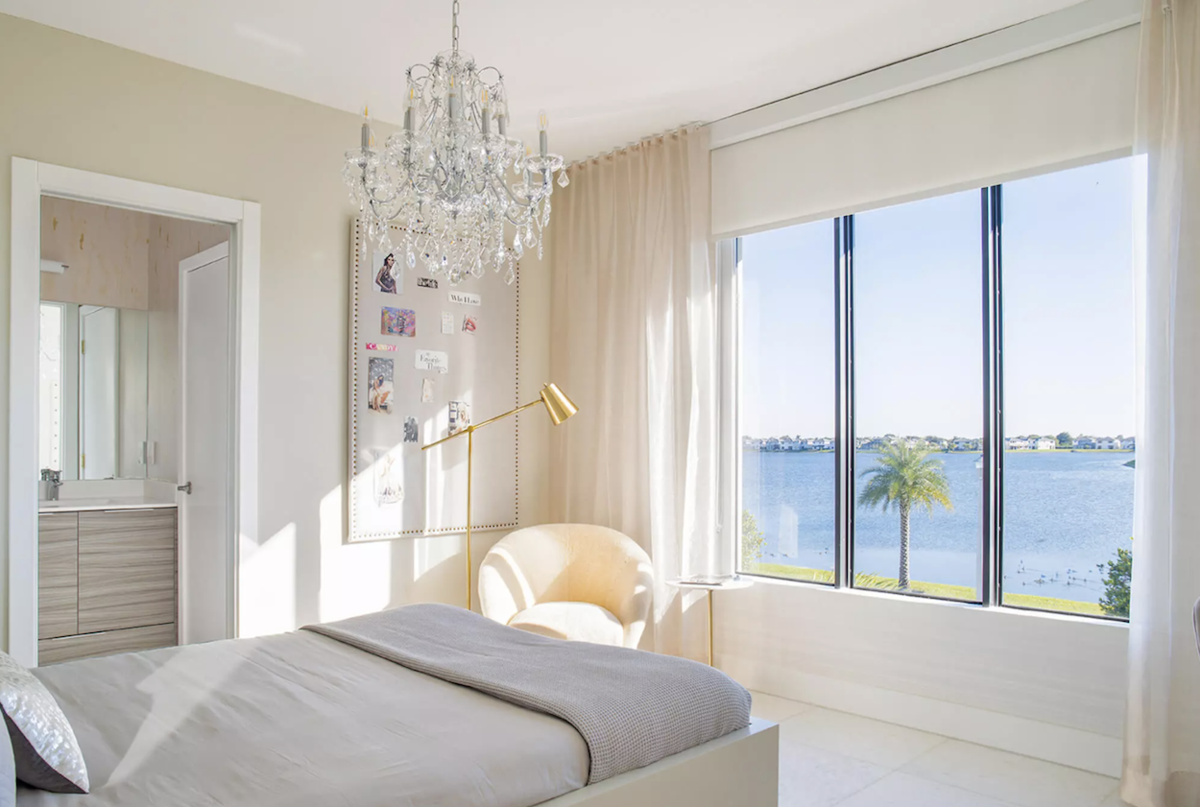
Can you tell me how you approach talking about money with clients and how you charge?
Super easy. I talk to them like I’m talking to a family member. I tell them, “I’m not one of those designers that wants to throw things that are overly expensive at you—I just want for us to keep in good communication about the project, because that’s what inspires me to do something beautiful for your home.” I say, “Don’t think that because I’m sitting here in front of you, you need to tell me something that’s not realistic. I want you to see me as a friend that you’re asking, ‘I want you to do my house. Do you think this budget will work?’” And that’s the way that I approach it.
Sometimes clients ask me, “Maite, what do you think it’s going to cost?” And I always tell them the same: “I don’t know.” Because I have no idea what I have in my head until I start working on it. Until the ideas start coming, I don’t know how much millwork I’ll need. That’s why I’d prefer that they tell me the budget they feel comfortable with—to see if I can do a lot of millwork, or if I can’t.
I have clients that don’t ever look into how much it costs—they actually don’t. I have done a lot of condominiums here that were $8.9 million or $12.7 million, and the clients have never come since COVID happened, and the budget was not a concern. At the same time, I have those that are $1.2 or $1.3 million, and they don’t have a budget to go over $200,000 or $300,000. And I also have clients who are from Miami who don’t have that amount of money, and they look at every single cent we are spending.
The client that contacted me from China recently—when I told him that I would take a look at the property and send him a proposal, he told me, “You send me the proposal, but I want to hire you. You are the right designer for that house. I have seen what you have done on the Moroccan house [in your portfolio]; you are from Spain and will understand [the Spanish style of] the house better than anyone else. I have done the research on you, and I want you to do the house.”
How do you structure your fees?
I charge a fixed rate. My contract has three phases. Phase one is the design concept, two is execution, and three is installation. The design concept is a big fee—I base it on the square footage, or if it’s turnkey service, or just decor, or remodeling. Based on that, I do my calculations. For a brand-new house that we don’t have to remodel, we don’t have to deal with a GC, and of course it has less work, so the [cost] will be less. That fee has to be [paid] upfront. I don’t take a retainer, because once you have presented to clients and they ask if you can break that fee up into installments, I have had two experiences where the second payment was a problem.
If they say they’re not feeling comfortable with the fee, I tell them, “This is the way I work. I have my structure—you are asking me to change the structure of my company, and I cannot do that, so maybe we were not meant to work together.”
What about those second and third phases?
Every project is different. Since we do a lot of turnkey, that’s an additional service. For example, this client in China—I have to basically manage everything, so that execution is much higher than the client that is living in the house and receiving all the delivered items. If someone from my office has to be present for every delivery, or things like that, the fee varies. I don’t have two proposals that are the same.
So do you do one big installation, or do you tend to let things arrive at the property over time?
We do try to have only one installation, except when the client is living at the house. If the client is living in the house, it’s a little more complicated. They start opening everything, they want to see everything—and you know what? I tell them, “Whatever will make you happy.” At the end of the day, it’s less work for us and they are taking on the responsibility of opening a product that, if it breaks when they are doing that, it is their responsibility. All of that is clear in my contract.
What does success look like for you?
It’s a joyful feeling of knowing that you are doing something that helps others—I see my projects as happy homes. I see myself as someone who brings beauty and order to the lives of others.
I always try to keep a good friendship with my clients. Sometimes we lose things along the way—if there’s a change-up order or we made a mistake, I always tell the team, “Don’t pass that on to the client.” We made a mistake, we’ll fix it. My practice is keeping the client happy. If I’ve been blessed that they put their trust in me, I have to give them back that trust.
Sometimes I walk into people’s homes and see things that I don’t like, but I always think, “It may have sentimental value for them—from their grandmother or someone who has passed away and is no longer with them.” So I always tell my team to never criticize anything. Something may not be beautiful to you, but it is the only thing they have left from someone they love, so always be respectful and delicate about everything. That’s how I practice, and I’ve been blessed with beautiful clients. And each time they have a new home, they call me. It’s about doing the right thing for the right people.
To learn more about Maite Granda, visit her website or find her on Instagram.
Homepage photo: Maite Granda | Courtesy of Maite Granda
















